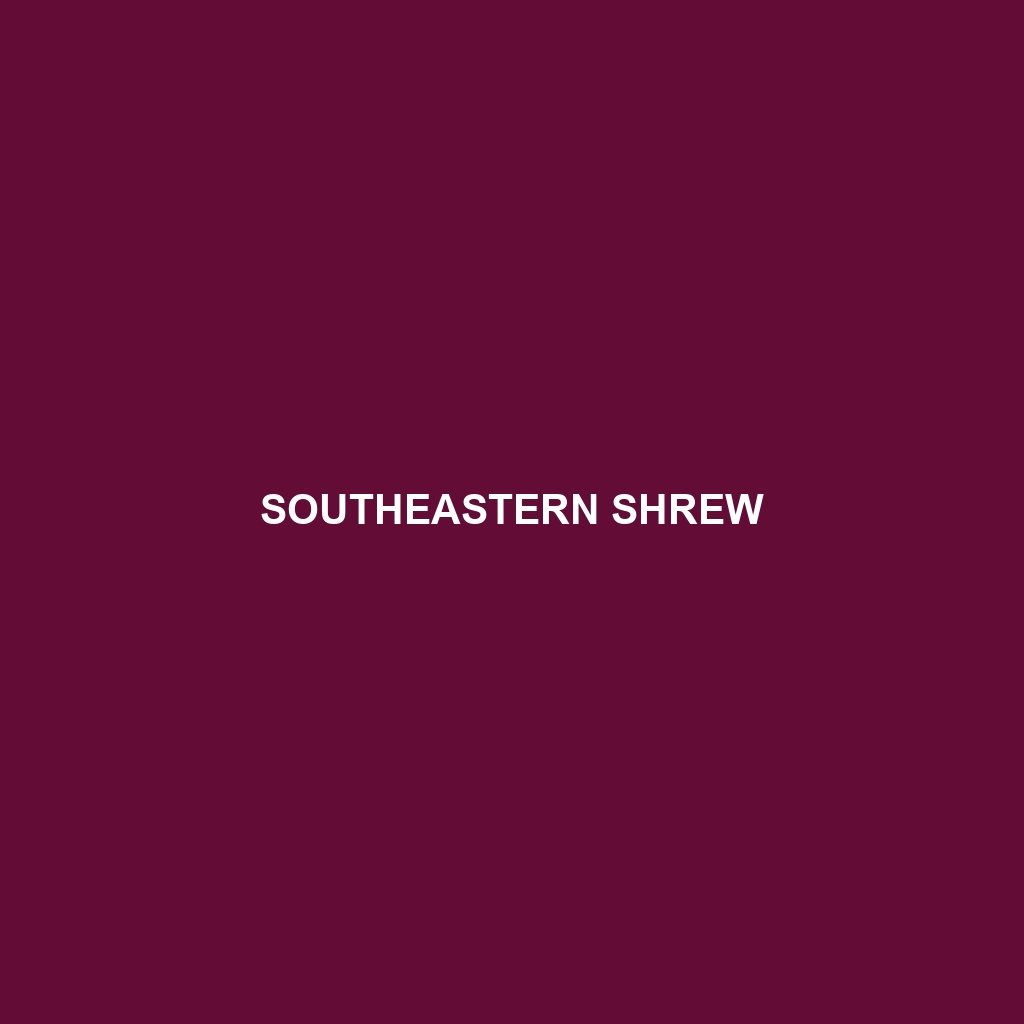Southeastern Shrew (Scientific Name: Sorex longirostris)
Habitat
The Southeastern Shrew is primarily found in the southeastern regions of the United States, particularly in areas such as the coastal plain of North Carolina, eastern Tennessee, and parts of Georgia. These small mammals thrive in a variety of habitats, including moist woodlands, wetlands, and areas rich in vegetation. They are commonly associated with dense undergrowth and leaf litter, which provide both cover and foraging opportunities.
Physical Characteristics
The Southeastern Shrew typically measures between 3 to 5.5 inches in length, with a tail that accounts for approximately half of their body size. They have a characteristic elongated snout and small eyes. The fur is dense and soft, exhibiting a reddish-brown or grayish-brown coloration on the dorsal side, while the underbelly is usually lighter. One distinctive feature is their large, rounded ears that are often hidden by fur, making them difficult to notice.
Behavior
Southeastern Shrews are primarily nocturnal and exhibit high activity levels, engaging in constant movement throughout their habitat. They are known for their unique habit of vibrating their bodies, which is believed to aid in communication. These shrews are also skilled burrowers, creating intricate tunnel systems in the leaf litter of their environment. Their agility and speed enable them to escape predators effectively.
Diet
The diet of the Southeastern Shrew consists mainly of invertebrates, including insects, worms, and small crustaceans. They also consume plant matter such as seeds and roots, although their primary food sources are animal-based. Unlike many other mammals, Southeastern Shrews require consistent feeding due to their high metabolic rate, making them opportunistic feeders that forage actively throughout the day and night.
Reproduction
The breeding season for the Southeastern Shrew typically occurs in the late spring to early summer. Females are capable of producing several litters each year, with an average of 3 to 7 offspring per litter. The young are born blind and hairless, relying on their mother for warmth and nourishment. They begin to emerge from the nest at approximately three weeks old and are weaned by six weeks.
Conservation Status
As of the latest assessments, the Southeastern Shrew is classified as Least Concern by the International Union for Conservation of Nature (IUCN). However, habitat loss and environmental changes pose potential threats to their populations, necessitating ongoing monitoring to ensure their viability in the wild.
Interesting Facts
One fascinating aspect of the Southeastern Shrew is its high metabolic rate, which allows it to consume up to double its body weight in food daily. This species is also unique in that it possesses venomous saliva, which it uses to subdue prey, a rare trait among mammals. Its ability to rapidly reproduce and adapt to varied habitats contributes to its resilience as a species.
Role in Ecosystem
The Southeastern Shrew plays a crucial role in its ecosystem as both a predator and prey. By consuming vast amounts of invertebrates, they help regulate insect populations. At the same time, they serve as a food source for larger predators, including birds of prey and small mammals, thereby contributing to the balance of the food web in their habitats.
